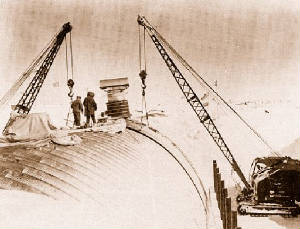Rubbish, junk, and garbage are not words typically associated with space. Space is imagined as a vast, and impeccably clean sphere; but we are making a big mess of it, a mess that is becoming a threat. In orbit around Earth are 10 million unwanted pieces of rubbish, zooming around without a care in the Universe. We call this space junk.
32 nuclear reactors number among the varied space-junk. Among it lies Vanguard I, America’s second satellite and the oldest piece of space debris still in orbit, dating back to 1958. Not all space junk is space-worthy though, there is normal waste as well, in fact there are about 200 bags of it. Instead of carrying their refuse back down to earth with them, cosmonauts on the Russian Mir space station just threw the waste into space for its first ten years. They hoped the bags would fall to Earth and burn up in the atmosphere, a rubbish idea; especially when one considers what space junk is capable of.
Space Concerns
Space junk is more than mere clutter, it is extremely dangerous. Without any air the pieces are never slowed down by normal collisions. During the first American space walk in 1965, Astronaut Edward White managed to ‘misplace’ his glove in the vacuum of space. The glove reached 28,000 kilometres per hour, making it the most dangerous item of clothing in history. It burnt up in orbit a month later, trying to slap the Earth. Space debris of all kinds can far exceed those speeds, some containing enough devastating kinetic energy to pass straight through 50mm of steel. In other words, enough to damage any space-faring craft that dares leave Earth. In fact, this has already happened.
In 2009 the defunct Russian Kosmos 2251 satellite was a large chunk of orbital junk, on its way with no power and no control. In its clunking traversal it collided with the far newer and far more expensive Iridium 33 satellite. As well as annoying some Americans the collision disembowelled both satellites. The result is thousands of satellite chunks have formed a pair of overlapping rubbish rings around the Earth in what appears to be a low-budget attempt to recreate Saturn.
The Clean Up
With our ever-growing dependence on space-borne technologies for television, pictures of space, and data on our own planet this is a big problem, the amount of debris is growing. It isn’t much of a threat, but it will be. Somehow the debris needs to be removed.
The most viable idea at the moment is to use balloons. A hot air balloon of sorts would be launched into space, flying 35,000 kilometres skywards. The balloon would swell far beyond the size of any sporting stadium on earth. Made of a light, tough material woven in many layers the balloon would simply be hit by space junk, some small things would pass through, while larger objects would collide and ricochet off of it.
The balloon is like a makeshift atmosphere, everything that touches it would slow down, hopefully enough to make it death spiral down to earth and burn up in orbit. There are also talks of adding these balloons to satellites, causing them to descend more rapidly and thus make them less dangerous to other satellites.
Many of the proposals for clearing up space are far-fetched, expensive and impractical, but something must be done. Inaction leads us towards a universe where we are trapped by the terrifying monstrosity of the ‘junkosphere’. Right now we are safe, there is a lot of space in space, but the risks grow, we are at a tipping point, and we want things to fall our way, and fall out of the sky. Now is the time to clean up our act.
Further Reading:
Spacejunk Infograpic at Cosmonline
Space Junk at ‘Tipping Point’ article on the BBC
Giant Space Balloon Article at New Scientist
Related Article: The Weight of The World

